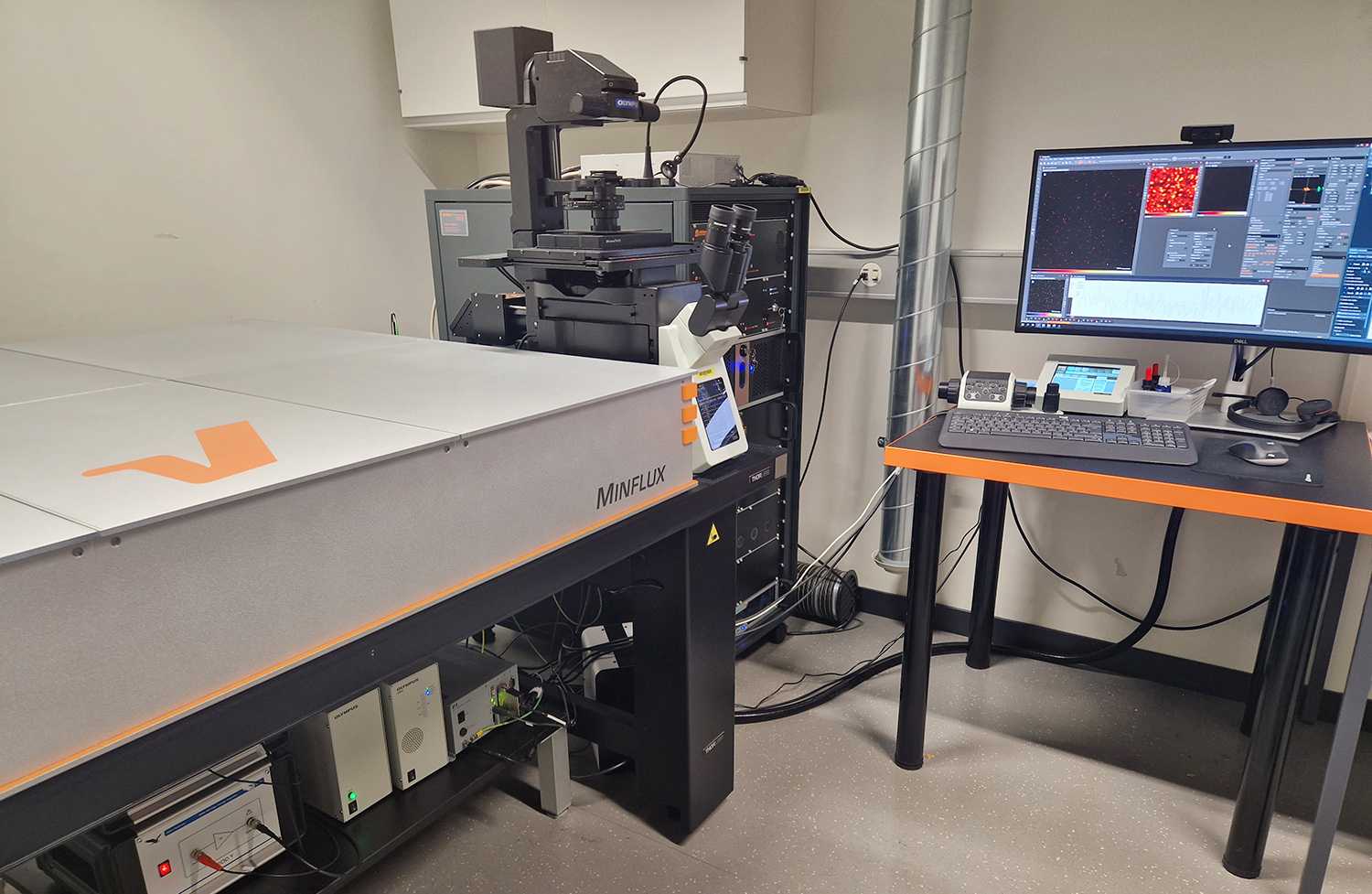New light microscope for highest precision in single-molecule localisation and tracking
A new super-resolution microscope and first of its kind in Switzerland, the MINFLUX microscope, is now installed at the Single Cell Facility (SCF). Based on single-molecule localisation, this high-precision microscope is now operational and available for all users of the SCF.
The new MINFLUX light microscope made by Abberior can achieve an astonishing localisation precision of fluorescent marker molecules of 1-5 nm in fixed samples and this also in three dimensions. Another usage mode of this instrument is the spatial tracking of individual particles e.g., moving within a cell, at a speed of up to 10 000 localisations per second. It combines the strength of various techniques from physics, chemistry, and mathematics to achieve the highest localisation precision and tracking rates of a light microscope to date. The acquisition of this microscope was made possible by a grant of the Swiss National Science Foundation given to projects submitted by Daniel Müller, Sven Panke, Timm Schroeder, and Barbara Treutlein. The microscope can be used by interested users for their research projects through an operator-based service of the SCF.

A limited photon budget, together with sample drift, are the main factors that prevent other nanoscopy techniques from reaching their theoretical potential. Like other single molecule localisation techniques, such as STORM/PALM, MINFLUX takes advantage of the on-off transition of fluorescent molecules to separate the emission of densely packed emitters over time. Unlike the aforementioned camera-based techniques, MINFLUX follows a hybrid coordinate-targeted/stochastic approach: localisation of each individual fluorophore is achieved by “injecting” a reference coordinate in the sample in the form of a local excitation minimum, a strategy derived from Stimulated Emission Depletion (STED) microscopy. The superior photon efficiency of the MINFLUX technology, being 20 times higher than camera-based techniques, in combination with its very effective active sample stabilisation system, are responsible for its unprecedented localisation precision.

SCF users with projects that may benefit from this technology can contact the SCF staff for support at microscopy@bsse.ethz.ch.
Learn about the Single Cell Facility.